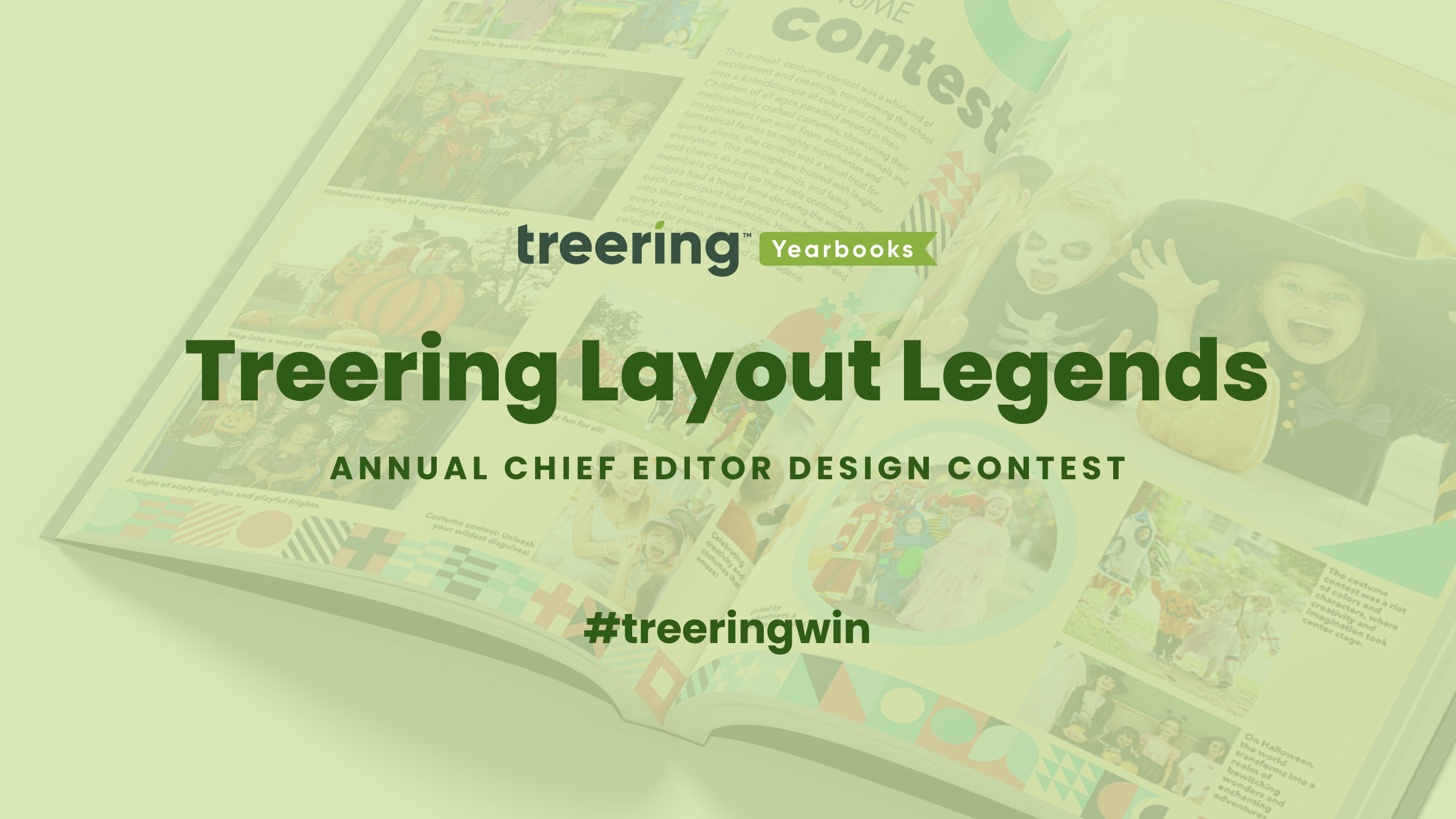When we talk with yearbook advisers and editors, we usually hear that the most stressful, most time-consuming part of their job is putting the book together. It doesn’t have to be that way. You can make a yearbook page in less than an hour.
And, sometimes, you can do it in far, far less. In this post, we’ll walk you through how to make that happen. The secret of how to make a yearbook page so quickly—and with so little stress—is found in one word: process.
See, a yearbook page isn’t really just about design. It’s about a whole bunch of stuff, like taking photos, reporting on events, gathering key information, writing headlines, stories and captions, and editing it all so it’s free of grammar and spelling mistakes. Which means, before you really get deep into making a yearbook page, you need to nail down everything that’s in play for your coverage.
Before we get ahead of ourselves, here’s (a really, really brief version of) how to make a yearbook page in less time and with less stress than ever before:
- Package up your stuff.
- Pick a design.
- Pay attention to minor details.
- Proof everything.
Package, pick, pay, proof. Has a nice ring to it, no?
Well, it doesn’t just sound good. It looks good, too.
To prove it, we followed the process and created a spread to document coverage of our make-believe high school’s boys basketball team. Here’s where we came up with:

We’re not saying it’s the best yearbook page ever made, but it took us 37 minutes. And for a time-strapped, stressed out yearbook adviser, we think our process delivers some seriously good results.
Let’s dive into the nitty-gritty of how we did it.
Package Up Your Stuff
If you’re going to make a yearbook page, the easiest way to cut down on time and stress is to know from the outset what the purpose of your page is and what you want to show and/or tell your reader.
Your first step, then, is to package up everything you’ve got on a subject—your photos, your stories, your headline ideas, cool tidbits of information that you’re not sure how you’re going to use—and study them for a while.
When it came to our details, we already had a headline, a subhead, and a brief story (which you can read here), plus a bunch of photos:

Once you’ve got everything, ask yourself the following questions:
- If someone only glances at this page for a moment, what should they take away?
- If someone reads the whole page, what additional benefit will they gain?
- Do these elements convey the full experience of the event or subject being covered?
- Do all the elements in the package complement each other? If not, where is the breakdown?
In our example, we’ll want a reader to learn two things if they only glance at the pace: The team had a resilient mindset and won the district title. Because one led to another, we’ll package them together for the one, key takeaway.
Other information for a reader to learn from our example yearbook page includes the new school record that was set and a whole bunch of firsts the team experienced. And rounding out our checklist, we’ll say that, yes, we’ve got everything covered that needs to be covered (it would’ve been nice to have a picture of the team with the district title trophy, but we didn’t have it) and that our elements complement each other.
Doing this will help you decide what’s going to make the cut for your page and, just as importantly, what’s not.
Pick a Design
OK, Step 2. If you’re not ready, this is where the stress can roll in.
Your design needs to work with your coverage, and it should convey a sense of consistency with the rest of your book (so if you’re using a theme, it needs to stay on theme, too). That can be a lot to accomplish in a little bit of time.
The time-saving, stress-reducing trick here is to pick a design from a template.
(Quick aside: Good yearbook software will have pre-designed templates for you to choose from or give you the ability to let you copy pages you’ve already created from scratch to help you save time.)
When you do that, you’ll want to keep a couple things to keep in mind:
- Find a template yearbook page that best serves as a vehicle to clearly present your reporting.
In the case of our basketball team coverage, we’re going to want something that has room for a story. We’ve done a nice job recapping the season (if we do say so ourselves), and we want to make sure that story has room to breathe. In other words, we don’t want to crowd it on a template that has a ton of photos. Embrace white space.
- Make sure there’s a clear visual hierarchy with a dominant element.
While we’re strong proponents of using The Golden Rule to guide your yearbook page layout, our biggest piece of advice is to give your page a sense of order by creating a visual hierarchy. Look for templates that feature one image placeholder that’s significantly larger than the rest.
Here’s the template we found:

We liked the way the featured photo was anchored with the headline banner (creating a way for us to easily package an attention-grabbing photo with one of our key takeaways) and the way there was plenty of room for our short story on the team’s season.
Once you’ve got your template, you’re well on your way to dragging and dropping your story, headlines, and photos to a nearly complete yearbook page.
Pay Attention to Minor Details
The devil’s in the details, as they say. And that’s no more apparent than when you’re working on a yearbook page. Your checklist should include all the technical stuff, like:
- Your folio. A folio is page numbering that appears on the outside portion of pages, usually at the bottom. A folio may also contain the title of your yearbook or your section title, so double check to make sure it’s correct and consistent with the rest of your book.
- Your font choice. Stick to two or three fonts for your entire book. We’ve spent some time talking about this before, but this is a good time to review and make sure you followed your book’s style (headlines included).
- Your gutter, margins, and bleed. Add extra space around the edges of pages to ensure photos and text won’t get cut out during printing. Unless you’re going for a full-bleed look. If you’re not, it’s best to stick with some basic margin guidelines.
There’s also some other stuff to consider, like whether you used the photos anywhere else in the book, whether you properly ID’d everybody, and whether your captions tell micro-stories not found elsewhere on the page.
Cross those items off your checklist and you pretty much know how to make a yearbook page. There’s just one thing left to do…
Proof Everything
Give your page a good proofing until you’re absolutely, positively sure it’s free of mistakes.
Good proofing requires a lot of things (concentration, command of the English language, and attention to detail, to name a few) but what you need before any of that is a printed version of the page you’re working on. Plus, you should probably know what to look for. Stick with the following:
- Spelling. A spell check feature is helpful, but don’t just rely on that. Homophones can wreak havoc on an otherwise clean yearbook page.
- Grammar. Every grammarian has something over which they obsess. (Like ending a sentence with a preposition?) Whichever it may be for you, check for it. If you’re not sure where to start, try looking for these 10 most frequent mistakes.
- Style. If you’re a frequent reader of this blog, you know we love a good style guide. This is a great time to put yours to use. Break it out and start checking your page against it.
If you wanted to know how to make a yearbook page in less time and with less stress, this is it. And it all boils down to that one word: process. If you follow ours, you’ll be making great yearbook pages in practically no time at all.






